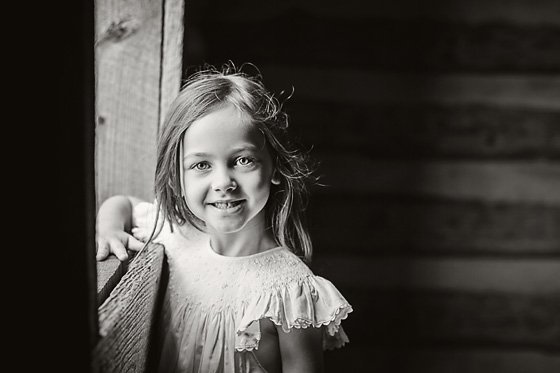Take a look into your viewfinder. How many focal points do you have? 9,11, 18, more? Whatever the case, the number of focal points a DSLR has is a huge selling point when you’re in the market for a new camera. Some people feel limited by their focal points, while others feel that constantly changing your focal points slows down the process.
Either way, if your shot is not in focus, it does not matter how many focal points your camera has. In fact, once you figure out aperture, shutter speed and ISO, focusing is often the next area of concern. So, let’s not waste any more time! Today we’ll learn the basics of focusing and focal points.
But before we get too far ahead of ourselves, let’s take a step back.
What are “Auto Focus Points” and Why are they important?
Pick up your camera and turn it on. Look through your viewfinder and set up like you are going to take a photo. Do you see those little dots on the screen? Those are your Auto Focus Points. Depending on what camera you have, you may have more or less points, but it will look something like one of the images below.
Focus points direct the eye to the part of an image that you want to feature. In our article, 7 Basic Photography Rules, we introduced some of the most basic photography rules. Of those rules, the “Rule of Thirds” instructed you to adjust your shot so that your subject is slightly off-center. Unless you’ve been using the “compose-recompose” method that we’ll address in a bit, chances are that you’re still wondering how to follow the rule when your camera keeps wanting to focus in the center.
In an ideal world, your subject wouldn’t move and you could simply change your focal point to the exact spot in which you want to focus. You’d focus and take a picture. Done. Unfortunately, there are a few problems with this approach.
1. You have children. Most young children don’t sit still, at least not for very long.
2. The focal point is too small to cover the area you’re trying to focus or it’s not exactly where you need it to be.
What do you do then? Since most cameras default to focusing on the center of the frame, you could just leave it there and use a technique called “Focus and Recompose.”
What is recomposing?
Composing an image starts by framing your shot and placing your subject somewhere within that frame before pressing the shutter release button. Recomposing simply means framing your shot first, focusing on your subject, and then moving your camera such that you’ve moved your subject to a new position within the frame.
For example, let’s look at the two images below. Your child is running down a dirt road, so using your center-point focal point, you frame the shot (if they were facing toward you, you would focus on their eyes). Shots like this can be interesting, but if you’re always putting your subject in the center of the frame, it can be rather boring. We don’t want you to be boring!

Do this instead. When you focus your shot, press the shutter release button half-way. This will “lock” your focus on your subject. Then slightly move your camera so that your subject is slightly off-center (right or left, doesn’t matter) and press all the way down on the shutter. That’s it! Focus, Recompose.
Many of us use this approach so much that we forget how to change our focal points.
What Type of Auto Focus Should You Use?
However, if you change your focal points, you can tell your camera exactly where you want to focus without recomposing. There are three different types of Auto Focus Modes: One Shot, Al Focus and Al Servo.

One Shot or AF-S: Auto Focus-Single
One Shot Focus (Canon)/AF-S (Nikon) is great for stationary subjects such as inanimate objects, adults and older children who are capable of sitting completely still or being posed. If you are interested in using the “Focus-Recompose” method, use this auto focus setting.
Al Focus or AF-A: Auto Focus-Automatic
This is the auto focus setting for indecisive people (just kidding). Al Focus/AF-A will automatically switch your camera from One Shot/AF-S (when you have a stationary subject) to Al Servo/AF-C (a moving subject) if your subject moves. If landscapes and architecture are your thing, give this setting a try.
Al Servo or AF-C: Auto Focus-Continuous
If you have young children, Al Servo Focus/AF-C is for you! In fact, if you are “shooting” children, babies, sports, candid photos or flowers on a windy day, consider using Al Servo Mode. With this setting, place the center focus point directly over your subject’s eye and push half-way down to focus. However, DO NOT recompose. As long as you have the shutter release button pressed half-way down, the camera will stay focused on whatever is in that center point, even if it’s moving. Press the button all the way down when you’re ready to take the picture.
Which mode is right for you?
Choosing a Focal Point
Now let’s talk about how to choose a focal point.
For example, let’s take a look at the image below. We used the focal point on the far right to focus on the little girl’s eye.

While you’re still learning how to shoot in manual mode, focus on your subject’s eyes. As you gain more experience, feel free to mix up your focal points away from the eyes. Get creative. Experiment.
And if you miss your focal point?
It happens. Especially when photographing children or if you’re shooting “wide open.” For example, you may or may not be able to tell that the image below is out of focus. 
So, let’s look again, up close.

Yep. Definitely OUT OF FOCUS!
Like all things, mastering focal points takes practice. You’ll also find that each lens you use has a sweet spot with regard to focus and sharpness. If you’re finding that you are consistently missing your focal points, consider opening up your aperture (higher number) or changing your auto focus setting. And if you are consistently having problems, take your camera in to your local camera shop to be serviced.
Practice
- Use Aperture Priority or Manual for today’s practice assignment.
- Adjust your Auto Focus Mode to One Shot/AF-S.
- Find a couple of your children’s toys (or other inanimate objects). Place one in front of the other (this is also an opportunity to play with composition).
- Adjust your aperture to the lowest number available on your lens (f/1.8-4).
- Using “Focus-Recompose,” focus on the object in the front and take your first photo. Focus on the object in the back and take a second photo.

- Now, change your focal points and repeat step 5.
- Once you feel comfortable, adjust your Auto Focus Mode to Al-Servo/AF-C.
- Then, turn your camera on your kids or pets or anything else that moves and PRACTICE, PRACTICE, PRACTICE!
Believe or not, there’s still a lot more to talk about with regard to focusing and focal points. Have you heard of “back-button focusing?” For now though, keep working on nailing those eyes and we’ll talk about a few of the advanced focusing techniques in the future. While you’re practicing, if you run across anything that doesn’t make sense, feel free to ask questions in the comment section.
For more lessons on getting to know your camera, check out our post on White Balance 101.
Photo Credit: Ashley Sisk











































